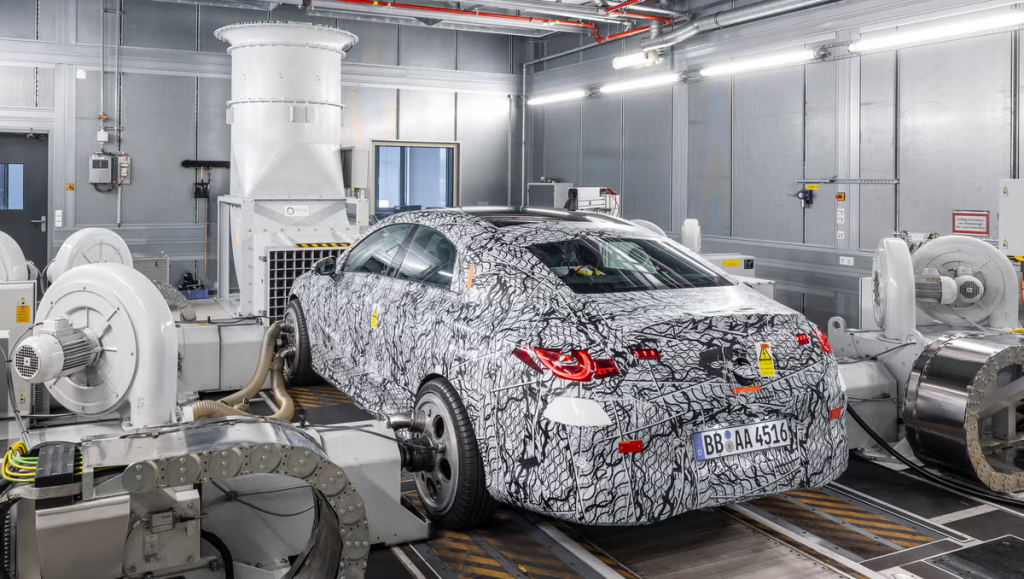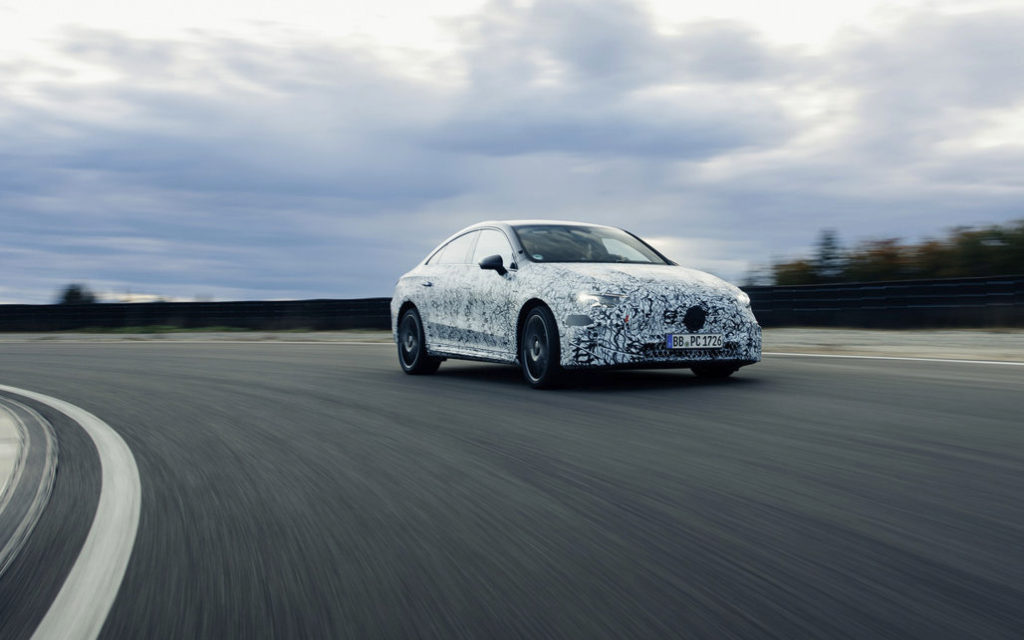Mercedes-Benz is preparing for a future where electric vehicles (EVs) dominate, but it acknowledges that internal combustion engine (ICE) cars remain relevant. To address this, the company is developing vehicles that cater to both powertrains.

The upcoming CLA replacement exemplifies this approach, offering EV and gasoline-powered versions. Using a flexible platform, Mercedes-Benz aims to provide customers with options while adapting to the evolving automotive market.
A Flexible Platform for Two Powertrains
The new CLA is built on the Mercedes-Benz Modular Architecture (MMA), designed to support electric and ICE powertrains. For the EV variant, the platform includes a thin battery under the floor, powering a rear-mounted electric motor, with an optional motor at the front for all-wheel drive. For the gasoline-powered version, the platform accommodates a front-mounted transverse engine for traditional front-wheel-drive operation, with an option to send power to the rear wheels.

This flexibility allows Mercedes-Benz to address varying customer preferences while maintaining production efficiency. Both versions share advanced chassis components, including front struts and a rear multilink suspension with rubber-isolated subframes. These features ensure a smooth ride and reduce vibration for all configurations.
Rethinking Gasoline Engine Efficiency
Mercedes-Benz is taking an innovative approach to its gasoline powertrains. Instead of modifying its 2.0-liter engine, the company developed a completely new 1.5-liter turbocharged four-cylinder engine with a 48-volt hybrid system. This compact engine meets Mercedes’ high standards for refinement, addressing issues like noise and vibration common with smaller engines.

The engine uses the Miller cycle, which improves efficiency by delaying the intake valve closure, effectively lowering the combustion compression ratio. It delivers 188 horsepower and 221 pound-feet of torque while complying with stringent emissions standards. Combined with a lightweight design, this engine showcases how traditional powertrains can remain relevant in a more sustainable future.
A Smarter Transmission System
The new CLA’s gasoline engine is paired with an updated version of the Mercedes 8F-DCT dual-clutch transmission, now called 8F-eDCT. This system integrates a 27-horsepower electric motor that aids with regenerative braking, boosts power, and enables limited electric-only driving. The electric motor is more directly connected to the powertrain than traditional belt-driven systems, improving responsiveness and efficiency.

Additionally, the transmission features a third clutch that decouples the engine from the drivetrain during coasting. This reduces drag and energy loss, allowing smoother and more fuel-efficient driving. While Mercedes hasn’t provided fuel economy figures, this setup is expected to deliver a 10–20% improvement over the current CLA.
Innovations in Electric Power
The CLA EV sets a new standard with its advanced technology. The rear-mounted electric motor delivers 268 horsepower, while an additional 107-horsepower motor is available for all-wheel drive configurations. The rear motor features a two-speed gearbox that automatically shifts to maximize efficiency, ensuring it operates at optimal range across different speeds.

For AWD versions, the front motor engages only when additional power or traction is needed. A clutch system disconnects the front motor when not in use, reducing friction in the front axle by 90%. This innovative setup enhances both efficiency and performance, making the CLA EV a strong competitor in the growing electric vehicle market.
Talking about Electric, back in 2023 Mercedes introduced the concept car “Mercedes AMG C63 S E” and captured everyone’s attention.
A High-Performance Battery System
Mercedes-Benz is introducing its first 800-volt battery system in the CLA EV, a milestone for the brand. This battery supports faster charging and greater energy density, allowing longer ranges. In the U.S., the CLA EV will come with an 85.0-kWh battery, estimated to deliver up to 370 miles on the EPA test cycle.

The battery’s advanced nickel-manganese-cobalt (NMC) chemistry, enhanced with silicon oxide in the anodes, provides 20% higher energy density than previous Mercedes batteries. This ensures a compact design without compromising performance. With support for 320-kW fast chargers, the battery can add about 150 miles of range in just 10 minutes, making it a practical choice for long-distance driving.
Practical Charging Solutions
The CLA EV’s fast-charging capabilities align with its advanced battery technology. Using an 800-volt system, the car can handle the growing network of 320-kW chargers, significantly reducing charging times. While such chargers are still rare, their availability is expected to increase, making high-voltage EVs more accessible.

Mercedes-Benz claims that the CLA EV can achieve nearly 466 miles of range on the European WLTP cycle, translating to approximately 370 miles on the EPA cycle. With two 10-minute fast charges, the car could cover up to 630 miles—comparable to many gasoline-powered vehicles. This combination of efficiency and convenience demonstrates Mercedes-Benz’s commitment to making EVs viable for everyday use.
A Strategic Path Forward
Mercedes-Benz’s dual-powertrain approach is a thoughtful response to the evolving automotive landscape. The company caters to both early EV adopters and traditional drivers by offering cutting-edge EV technology alongside reimagined ICE options. The new CLA represents a transition phase where advanced engineering meets practical design to serve a diverse customer base.
The CLA is set to arrive in the U.S. in late 2025, with similar technology expected to appear in the GLA and other compact crossovers. This strategy ensures that Mercedes-Benz remains competitive while advancing the transition to electric mobility. The combination of innovation, flexibility, and performance underscores the brand’s vision for the future of transportation.

